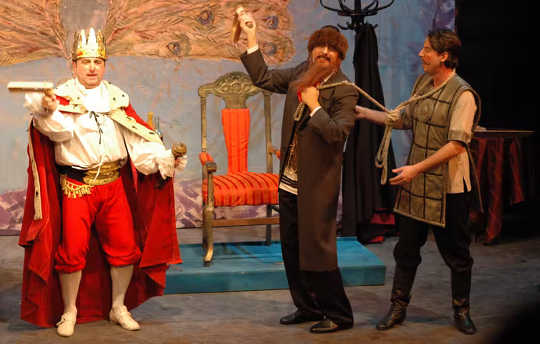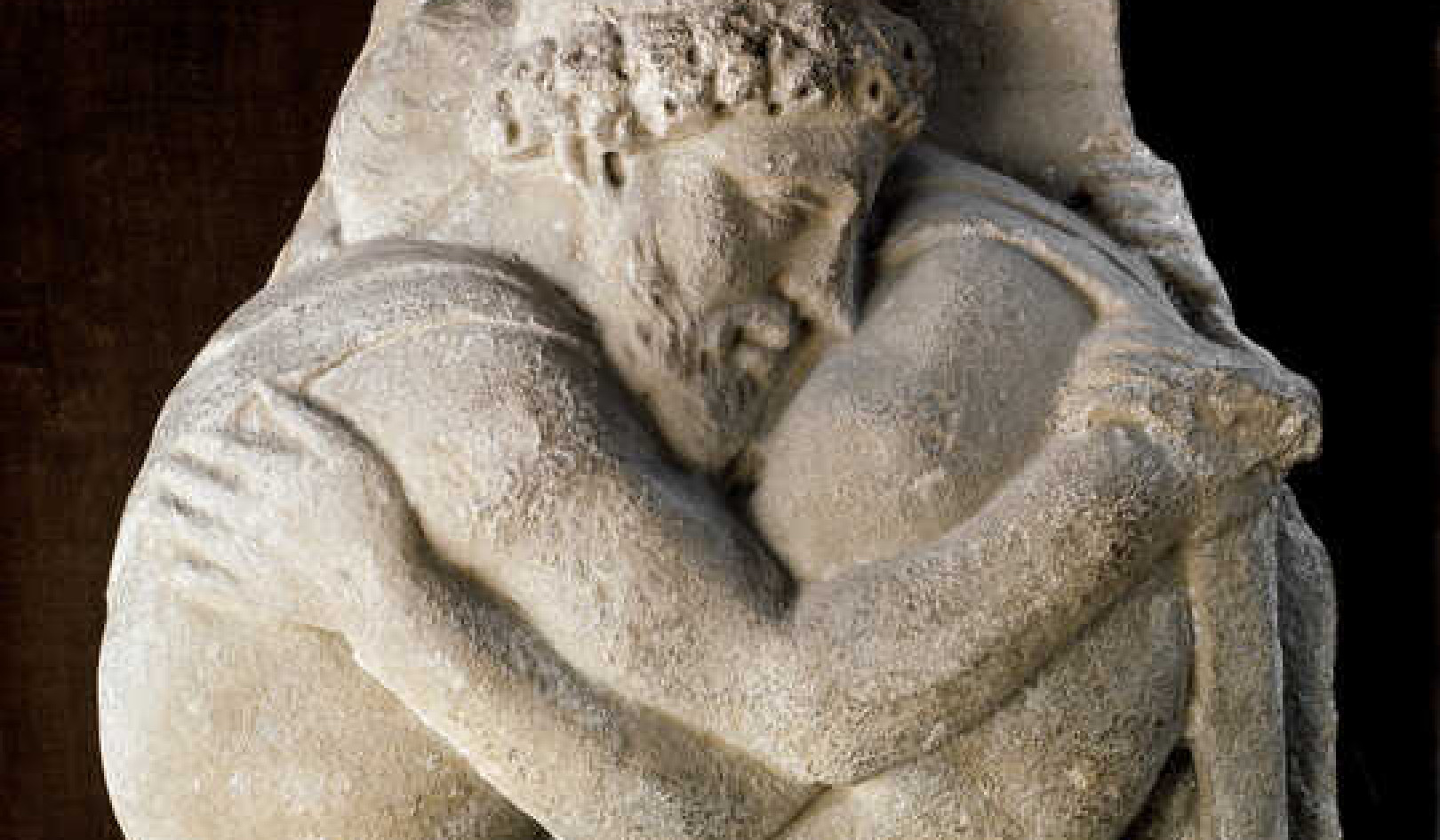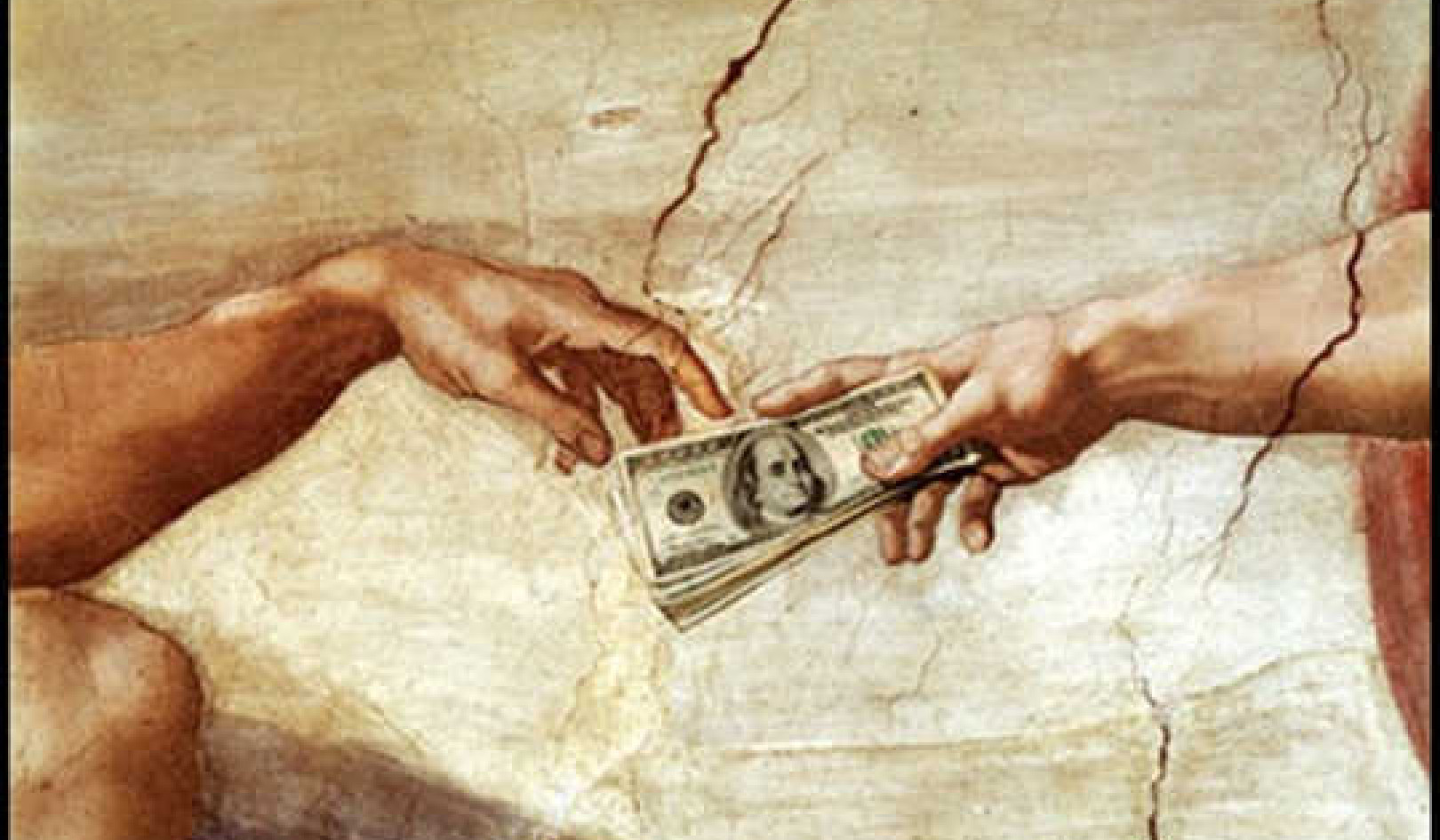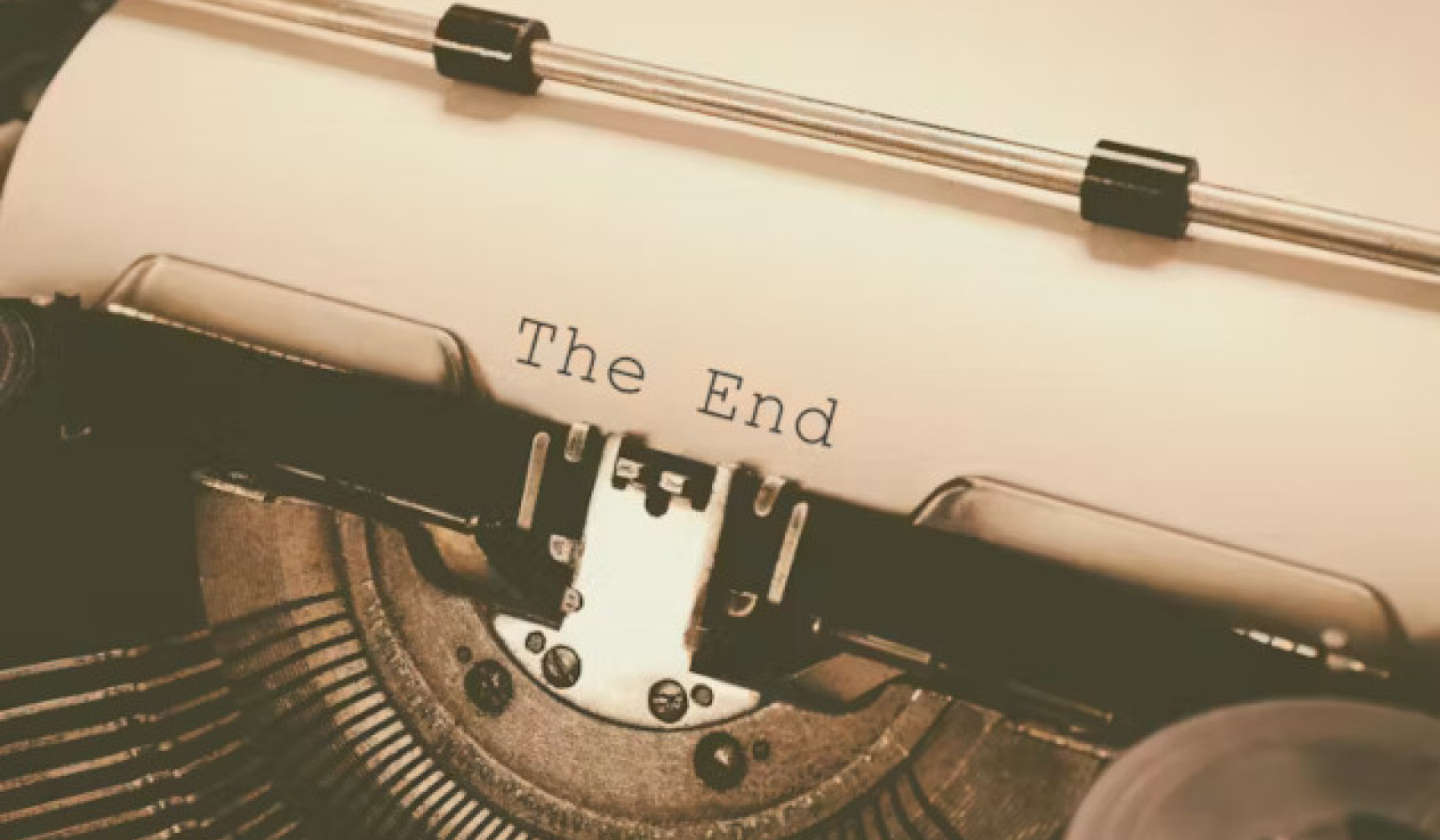
A theater performance during the Purim holiday in Warszawa, Poland. Photograph by Henryk Kotowski, CC BY
Purim, the springtime Jewish holiday packed with much merriment and humor, recalls the biblical story of Queen Esther.
In this tale, the queen stayed true to her Jewish roots and used her status to sway her husband, King Achashverosh, to defend the Jews against the sinister plans of Haman, the king’s adviser, who had plotted to wipe them out.
In commemoration, Jews participate in yearly communal readings of the Scroll of Esther, which is part of the Hebrew Bible canon, engage in gift-giving and host large meals.
A lesser-known tradition is the Purim spiel, a play put on in schools and synagogues that tends to add even more color to a cheerful holiday.
As a scholar of American Judaism, I interpret the Purim spiel as a carefully curated lampoon meant to allow for a limited amount of public criticism of rabbis and the institutions that support Jewish life.
A satire on life in religious schools
The Purim spiel likely dates to medieval times, borrowed from the annual Carnival festivals of Christian Europe. In the early 1800s, it took on a new form in Volozhin, which at the time was a small Lithuanian town with a high concentration of Jews. Volozhin was home to the Etz Hayim yeshiva, a pioneering advanced academy for young men where pupils would pore over the Talmud, the classic rabbinic text of Jewish law.
The Volozhin yeshiva set the standard for subsequent Jewish academies in Eastern Europe. It was also the model for the schools that currently flourish in the United States and Israel.
The headmaster of the yeshiva – called “rosh yeshiva” in Hebrew – would shrewdly appoint a “Purim rabbi” each year. The “ordainee” would put on a one-man routine that tended to poke fun of the school’s administration and satirize various aspects of yeshiva life.
One memoirist, writing in 1930, recalled that the leading scholars of his community eagerly anticipated the Passover vacation return of yeshiva students who would recount the musings and humor of the Purim performance that had taken place several weeks earlier in Volozhin.
In most instances, the sharp and witty criticisms were tolerated – if not celebrated – by the schools’ administrations as keeping within the jovial spirit of Purim. After the holiday, the “Purim rabbi” returned to his student status and the rosh yeshiva would once again regain control. New yeshivas in Europe adopted the Purim rabbi tradition to bring up something that might have gone unstated about, say, a poor teacher, the food, or facilities to improve their schools’ offerings.
Purim spiels in the US
In time, this custom migrated to the U.S. In major yeshivas in Manhattan and New Jersey, these “‘rabbis’ rule with force on Purim,” a popular Hebrew-language newspaper, Ha-Do’ar, reported in March 1959. The writer was referring to the Purim spiel tradition that had become significantly ensconced in American Judaism.
The standup routine evolved into an ensemble production in the post-World War II period, perhaps because of the rise of television sitcoms, the golden age of Broadway musicals, and, in the 1970s, the advent of “Saturday Night Live.”
As seen in copies of scripts held in archives, in 1963, rabbinical students at Hebrew Theological College in Skokie, Illinois, which had recently moved to the northern Chicago suburb, produced parodies titled “North Side Story.” The following year, HTC humorists wrote “Bye Bye Beardie” to vent frustrations over the many draft dodgers who enrolled in the school primarily to avoid the draft rather than to study for the rabbinate.
Purim spiels paved inroads to the Conservative and Reform ranks, as well. Isaac Klein, an important Conservative rabbi, kept a notebook that he labeled “Purim Thora” that preserved many witty lines – mostly in Yiddish and Hebrew – that he employed in his years at the Jewish Theological Seminary.
The Reform students and faculty at Hebrew Union College in Cincinnati routinely laughed aloud as its young men performed Purim satires that caricatured noted figures such as the American Zionist leader Rabbi Abba Hillel Silver and Hebrew Union College President Julian Morgenstern.
A reflection of Jewish self-confidence
The rise of Purim spiels in yeshivas and rabbinical seminaries put congregations on notice. , a young Conservative rabbi, hoped aloud in the pages of Boston’s Jewish Advocate in 1940 that “the Purim-spiel is now a thing of the past.”
Waxman was part of a rising generation that had labored mightily to improve decorum in their synagogues. The slapstick and lowbrow tone of the Purim plays did not agree with Waxman’s vision for the American synagogue.
Other pulpit rabbis developed a thicker skin. In 1954, the included a Purim spiel script composed by the amateur comedians of the Young Israel of Flatbush – replete with generic barbs and jabs at rabbis and lay officers – in its monthly program manual for synagogue activity.
With the permission of campus rabbis, Jewish undergraduates circulated routines for coeds on other college quads to merrily use on Purim.
The rise of the Purim spiel in America, then, can be understood as a measuring stick of Jewish self-confidence in the New World. The most self-assured religious leaders welcomed it as a once-a-year occasion for controlled comedic chaos and rabbinic introspection. It was meant to help glean insight from the wisdom of young people and others, predicated on the belief that things would return to normal on the other side of Purim.
About The Author
Zev Eleff, President and Professor of American Jewish History
This article is republished from The Conversation under a Creative Commons license. Read the original article.

Related Books:
Prayer Journal for Women: 52 Week Scripture, Devotional & Guided Prayer Journal
by Shannon Roberts and Paige Tate & Co.
This book offers a guided prayer journal for women, with weekly scripture readings, devotional prompts, and prayer prompts.
Click for more info or to order
Get Out of Your Head: Stopping the Spiral of Toxic Thoughts
by Jennie Allen
This book offers insights and strategies for overcoming negative and toxic thoughts, drawing on biblical principles and personal experiences.
Click for more info or to order
The Bible in 52 Weeks: A Yearlong Bible Study for Women
by Dr. Kimberly D. Moore
This book offers a yearlong Bible study program for women, with weekly readings and reflections, study questions, and prayer prompts.
Click for more info or to order
The Ruthless Elimination of Hurry: How to Stay Emotionally Healthy and Spiritually Alive in the Chaos of the Modern World
by John Mark Comer
This book offers insights and strategies for finding peace and purpose in a busy and chaotic world, drawing on Christian principles and practices.
Click for more info or to order
The Book of Enoch
translated by R.H. Charles
This book offers a new translation of an ancient religious text that was excluded from the Bible, offering insights into the beliefs and practices of early Jewish and Christian communities.
























